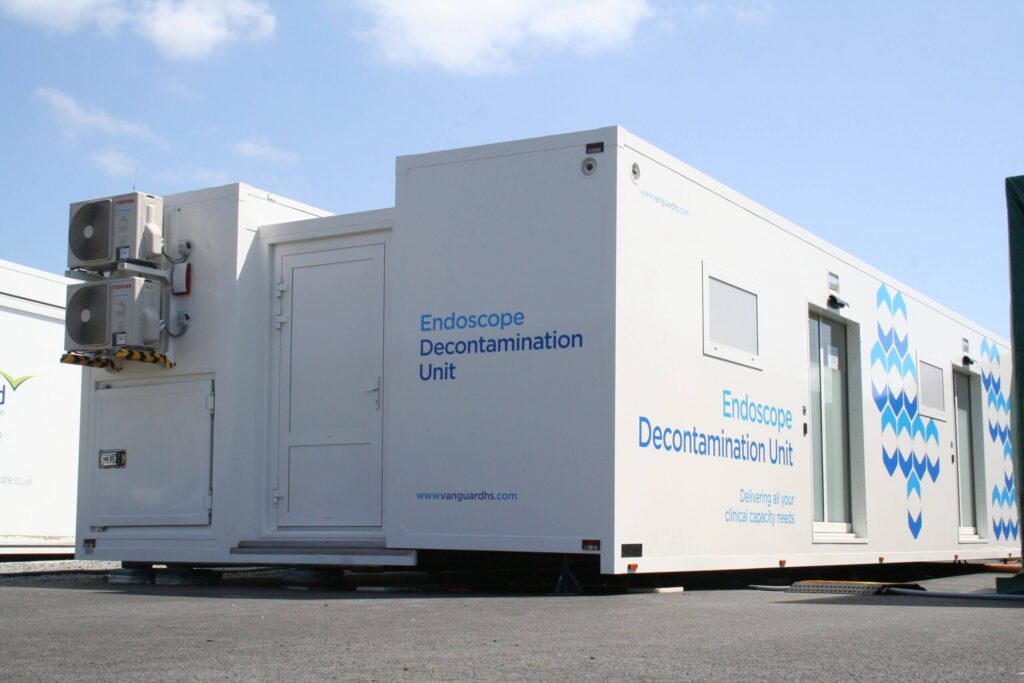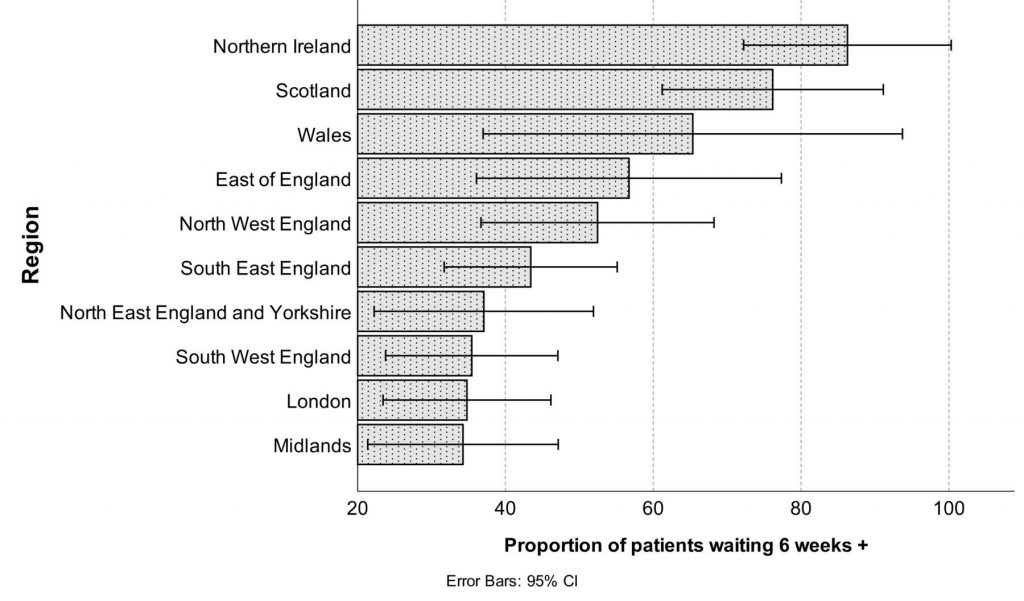It looks like you are in the United States
We have a different site (www.q-bital.com) which better suits your location
Today’s NHS is faced with a number of significant pressures, including the rapidly increasing ageing population and the comorbidities that can bring, an unequal spread of accessible care throughout the UK and rising pressures for more sustainable healthcare practices. Growing waiting lists were an issue long before the Covid-19 pandemic, with many planned care procedures being cancelled as a result of tired and ‘crumbling’ hospital infrastructure. With waiting lists for diagnostic services reaching 435,000 in England in January 2022, it is clear that this speciality in particular has been greatly impacted by the restrictions imposed by outdated infrastructure and the cessation of endoscopy services throughout the Covid-19 pandemic.
Over the years NHS buildings have been adapted and developed to accommodate growing demands since the foundation of the Health Service in 1948, however the outdated infrastructure has limited adaption capabilities to fit alongside advancements in healthcare practices. Indeed, the costs of tackling the NHS maintenance backlog stood at £9.2 billion at the end of 2020/21, however due to recent increased infection control measures, contractors have found it increasingly difficult to carry out such work in live NHS environments. The number of clinical incidents that have occurred due to outdated infrastructure has tripled in the last 5 years, a recent report has found.
Indeed, hospital waiting lists have been on the rise since 2009, 11 years before the pandemic induced disruption in care. In April 2022 hospital waiting lists reached an all-time high of 6.2 million, with predictions that will continue to soar to 10.7 million by March 2024. To add to this, the number of individuals waiting for key diagnostic tests in England stood at 369,100 in August 2021, with this subsequently rising to the aforementioned 435,000 by 2022, demonstrating the true backlog that this speciality is facing. Moreover, a recent FOI report highlighted the state of play of NHS England’s endoscopy services, with 41% of 105 respondents stating that their decontamination suites were either approaching or exceeding manufacturer’s recommended 10-year lifespan. Of these Trusts, 87% failed to meet 6 week waiting targets between April 2018 and March 2019. This illustrates that yes, whilst the Covid-19 pandemic and the pausing of elective care throughout the UK hindered hospital waiting lists, this cannot be fully to blame as the issue extends back further.
The 2021 UK National Census for Endoscopy looked at endoscopy and decontamination services across the UK, uncovering that 42.7% of healthcare providers surveyed required additional building works to increase decontamination efficacy by up to 20%. In addition, 59% of respondents stated that additional endoscope re-processors and drying cabinets were required to increase decontamination capacity. Decontamination facilities are regularly located within hospital endoscopy services, however, standalone facilities can be installed and seamlessly linked to the main hospital to augment capacity and ensure greater efficiency of endoscopy services, therefore driving down waiting lists. This is especially useful during periods of refurbishment, with the introduction of mobile and modular decontamination facilities to maintain capacity. The investigation also revealed that reluctance to attend and subsequent “did not attends or DNAs” for procedures was at its second highest level since 2019, with a possible reason for this being the fear of contracting Covid-19 when visiting the hospital. This therefore amplifies the need for standalone endoscopy services, separate from the main hospital site, that increase patient confidence and therefore assist in tackling waiting lists.

Average life expectancy in the UK is rising year on year, rising 0.15% between 2021 and 2022, and, whilst this is something to be celebrated, it does mean that there are greater numbers of individuals living with chronic conditions, such as dementia and diabetes, that require more long-term care. This has created an exacerbated pressure on NHS services, particularly as it has been acknowledged that the average 90 year old costs around 7 times as much to care for than the average 30 year old. As a result, there have been calls for the improvement and implementation of diagnostic services across the UK to enable people to remain healthier for longer and therefore removing the strain on NHS services. Additionally, the development of community diagnostic centres across the country will bring services closer to patients, reducing pressure on acute hospital sites and have a positive impact on regional health inequalities by ensuring diagnostic facilities are more accessible.
Furthermore, the UK national census for endoscopy services also revealed that whilst waiting times for procedures are still on the rise, there are clear regional disparities here:

Regional healthcare inequalities have long been an issue, however, the Covid-19 pandemic and the subsequent planned care backlog exacerbated this further. Healthcare inequalities is a multifarious term that covers how healthcare accessibility is unequally distributed between different groups of people. Ultimately, health inequalities are about the impact of an individual’s status on their health. This can include health status, accessibility of care services, quality of care and wider detriments to health, for example housing. Ensuring that care and diagnostic services are more conveniently accessible to the patient will positively affect patient outcomes through earlier diagnosis and, as mentioned previously, it will relieve pressure at main hospital sites, therefore positively impacting the outcomes of patients on waiting lists for other specialities.
The NHS commitment to deliver more sustainable infrastructure is reflected in The 2020 Construction Playbook where it details the wider use of Modern Methods of Construction (MMC) to assist in achieving net zero carbon targets. In Autumn 2020 the government made a pledge to building 40 new hospitals in England by 2030, all using sustainable infrastructure practices that will help the movement towards reaching net zero emissions by 2040. In addition to this, a further 70 hospitals will be granted upgrades, with £850 million pledged to improving ward spaces, mental health facilities and operating theatres. It is clear that a large number of England’s endoscopy services are in need of significant refurbishment to enhance efficiency and the introduction of mobile, modular and mixed-modality Healthcare Spaces, whether they be located on the hospital site or within the community, serves as a time efficient and cost-effective solution to maintaining and increasing capacity.



Vanguard Healthcare Solutions
Unit 1144 Regent Court, The Square, Gloucester Business Park, Gloucester, GL3 4AD

We have a different site (www.q-bital.com) which better suits your location